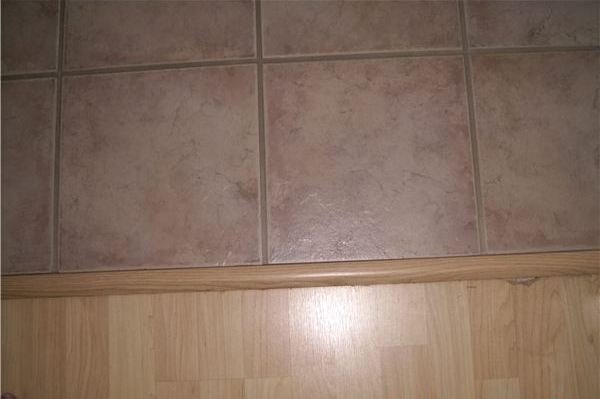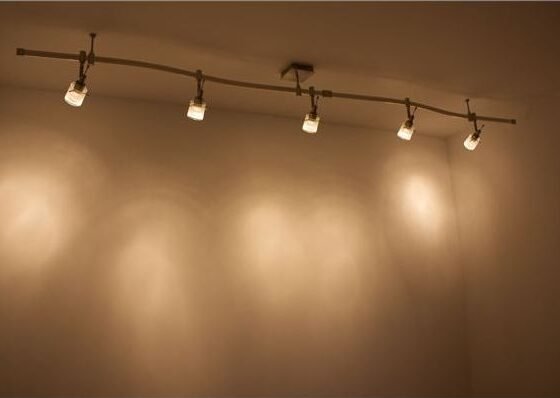Table of Contents Show
Creating a smooth transition from ceramic tile to wooden floor requires matching wood transition pieces that are either flat or have a curve to them. It is important to choose the right transition pieces based on the elevation of the floors that are being joined.

Wood and Tile Transition: Considerations and Tools
Joining ceramic tile to the wooden floor properly will give the space a professional finished look even if it was done from beginning to end by the homeowner. Choosing transition pieces needs to take the following into consideration:
- The color of the wood and tile
- The height difference between the two floors
- Gap width between the two types of floors
Read Also:
Tools Needed:
- Cordless drill and concrete drill bit
- Screwdriver
- Tin snips
- Measuring tape
- Concrete anchors (if installing over slab)
- Hand saw
- Rubber Mallet
- Liquid Nails (Adhesive)
- Pencil
- Molding or transition pieces
Wood and Tile Transition: Color Choices
How do you combine laminate flooring and ceramic tile professionally? You need to match the transition wood piece to the same type of wood and color of the flooring. There are instances in which identical transition pieces are hard to find because they are created from a different lot, the item has been discontinued or the stock is in short supply.
A handy trick to employ is to select a molding of similar wood with the same color and grain pattern. Once installed, the small differences will visually disappear because the transition piece is very small in relation to the expanse of laminate and tile flooring.

The transition piece used on the above picture is a creative use of standard molding to create a perfect transition from ceramic tile to the wooden floor. Matching laminate transition pieces were impossible to find at the time and there was a pronounced height difference between the two types of flooring.
Wood and Tile Transition: Floor Elevation
The picture below shows a ceramic tile to wooden floor molding piece used instead of a traditional transition piece. (molding does not have a metal track component). The molding is flat on one side and raised on the other. The wood flooring is 1/4 inch higher than the tile and the shape of the molding piece on the wood side is 90 degrees.

A quarter round was used to even out the elevation. The rounded end sits on the low elevation, in this case, on the tile side. By taking into account the difference in floor height, the piece provides a smooth transition between the different elevations.
The molding has been placed directly under the door, so when the door is closed, only tile or wood can be seen from either side. Measuring appropriately is crucial to achieving this finished look.
Wood and Tile Transition: Installing Molding Transition
How do you combine laminate flooring and ceramic tile using mold pieces?
The instructions to cut and install a molding piece are as follow:
- Measure and cut the transition pieces to fit the desired length and trim appropriately to fit under door jams.
- Apply Liquid Nails to the full-length bottom of the transition piece and to the 90-degree angle side.
- Press firmly into place and wipe off excess.
- Allow drying for 24 hours.
Wood and Tile Transition: Installing Transition with Metal Track
To use a transition piece with a metal track, laminate flooring must be installed with a 1/2 inch gap between the two sections of floor to allow for installation of the metal track to bare concrete. The instructions are as follow:
- Ensure that there is a 1/2 inch gap between the wood and tile sections exposing bare floor.
- Cut metal track using tin snips 1/2 inch shorter on both ends to allow for easy installation.
- Lay track down and mark floor through the holes in the track with a pencil.
- Use concrete bit to drill holes to install anchors.
- Place anchors in holes.
- Lay metal track on top of concrete anchor holes and screw into concrete.
- Cut wood transition piece to size and snap onto the metal track. You may have to tap it in place with rubber mallet.

Molding and traditional transition pieces in the most popular wood colors and styles can be found at home improvement warehouses. For discontinued lots, contact wood flooring liquidators in your particular area and on the internet. If possible, it is best to get the transition pieces that match the selected flooring at the same as ordering the flooring to make the process easier.
Resources
- Home Construction & Improvement™, http://www.homeconstructionimprovement.com/how-to-transition-hardwood-and-tile/









